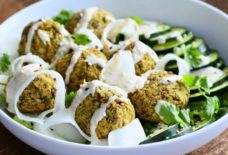Ful Mudamas--Fava Beans: Ancient Legume Specialty of the Middle East
By: Blanche Shaheen/Arab Arab America Contributing Writer
If there is ever a nutritional staple that can get you through tough financial times and food insecurity, it might very well be the overlooked fava bean. During this Covid-19 crisis when market aisles were as barren as the Sahara desert, fava beans came to my rescue. When proteins and vegetables are nowhere to be found fava beans can give you a lot of nutrition in one swoop. Fava beans are rich in folate, iron, manganese, copper, magnesium, and potassium as well as 13 grams of protein and 9 grams of fiber per serving. Fortunately not too many people know what fava beans are or how to use them, so it will be easier to get your hands on them. Now you can learn how to use favas to reap the benefits during this quarantine and beyond.
Arabs have been cooking with these legumes for centuries, as the people of the Ancient Near East began to cultivate them during the Bronze age, (3300-1200 BC). Favas are similar to lima beans, only much larger with a starchier texture and more complex flavor that pairs well with herbs and spices.
The most popular preparation of fava beans in the Middle East is called Ful Mudammas. Ful mudammas originated in Egypt, but every Levantine country from Palestine, Lebanon, Jordan, and Syria prepare this dish with their own flair. Some add cumin and jalapeno, while others might add onions and extra lemon juice. Regardless of which preparation, a heavy dose of extra virgin olive oil not only adds a rich flavor but helps the body absorb all those fat-soluble vitamins and minerals. This dish is basically the Arab interpretation of refried beans.
Arabs tend to eat ful mudammas for breakfast with a side of eggs, pickles, and bread, as the dish satisfies hunger with complex carbs and plant protein for many hours. While the west might think it’s odd to eat beans for breakfast, the nutritional profile far surpasses oatmeal–and legumes give sustained energy without the insulin spikes of a sweeter breakfast. However, you can eat this dish any time of day, and ful makes a great starchy side dish with any meal.
You can check out the easy technique for making this specialty, as well as suggested side dishes for a complete Arab style breakfast here:
FUL MUDAMMAS
1 can fava beans (with water)
½ bunch curly leaf parsley, finely minced
4 scallions, finely minced
1 jalapeno, finely minced
1 clove garlic (optional)
½ tsp cumin (optional)
Juice of a half lemon (or whole lemon if you like it extra sour)
¼ cup olive oil plus more for drizzling
Finely mince the scallions, parsley, jalapeno, and optional garlic and set aside. Pour the fava beans with the water into a skillet, and simmer over low heat for 30 minutes. If you like the dip a little soupier add more water as you simmer until you get the consistency that you like. Once done, add the lemon juice, chopped herbs, and vegetables, optional cumin and mix. Drizzle more olive oil on top before serving, and add garnishes of pickles, tomatoes, olives, and even hard-boiled eggs if serving for breakfast.
Blanche Shaheen is a journalist, host of the YouTube cooking show called Feast in the Middle East, and a cookbook author. For more authentic and classical Middle Eastern recipes, you can now purchase her brand new cookbook: “Feast in the Middle East, A Personal Journey of Family and Cuisine” by clicking HERE:https://secure.mybookorders.com/Orderpage/2189
To check out her cooking video tutorials and other recipes follow Blanche on
YouTube: https://www.youtube.com/user/blanchetv
Her blog at https://feastinthemiddleeast.wordpress.com/
Instagram: https://www.instagram.com/blanchemedia/
Facebook: https://www.facebook.com/FeastinTheMiddleEast
Check out Arab America’s Blog here!


